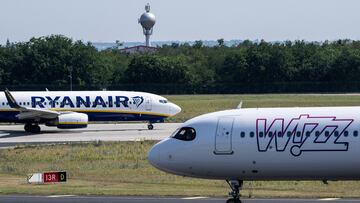This is what the electric plane capable of carrying more than 90 passengers 500 miles will look like
As the aerospace industry finds ways to become more sustainable, the Elysian E9X could represent a crucial step in the transition to a greener future.


Elysian, a Dutch aviation startup, has unveiled a groundbreaking design for a battery-electric aircraft capable of carrying 90 passengers over 500 miles.
Key design choices allow it to achieve significantly greater range and efficiency compared to previous electric aircraft proposals.
Elysian unveils E9X battery-electric 90-seat passenger aircraft https://t.co/MBtZ8ajpVn pic.twitter.com/1mA1anHE4w
— urbanairmobilitynews.com (@urbanairmobili1) January 11, 2024
Elysian’s research, conducted in collaboration with Delft University of Technology, suggests the E9X could cover 50% of all scheduled commercial flights worldwide.
Rob Wolleswinkel, co-founder and CEO of Elysian, said: “Contrary to common belief, large battery-electric aircraft can carry much more energy and are aerodynamically more efficient than originally assumed.”
How the plane was designed
The E9X’s unique design features several key innovations:
- Wing-mounted batteries: Placing the batteries in the wings, rather than the fuselage, helps distribute the weight more efficiently and improves aerodynamics.
- Larger wingspan: The E9X has a wingspan larger than a Boeing 737 or Airbus A320, enhancing lift and reducing drag.
While Elysian’s E9X represents an exciting breakthrough, the company acknowledges that significant technical challenges remain before the aircraft can become operational by 2033 as planned. Issues such as battery cell development, thermal management, and high-voltage power transmission must be addressed.
History of electric aviation
The idea of electric-powered flight has captivated aviation enthusiasts for decades. As early as the 1970s, pioneers experimented with small electric aircraft, but these efforts were hampered by the limitations of battery technology at the time.
Related stories
Over the following decades, gradual improvements in energy density and power-to-weight ratios have slowly expanded the possibilities for electric aviation.
In the 2010s, a new wave of electric aircraft startups emerged, focusing on urban air mobility and short-range commuter planes. Companies like Joby Aviation and Lilium developed electric vertical take-off and landing (eVTOL) vehicles, demonstrating the potential for emissions-free air transportation. However, these designs were still constrained to relatively small passenger capacities and limited ranges.

